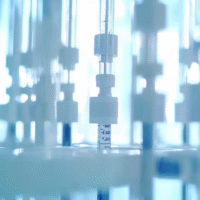Understanding the Trial Results
The VISCIPH A study looked at how exercise can help patients with cancer who experience pain, numbness, and tingling in their arms and hands due to treatment. This condition is known as chemotherapy- and immunotherapy-induced peripheral neuropathy (PNP).
What Worked?
- The study showed that a special type of exercise called sensorimotor and vibration training (PNPEX) is feasible and might help patients feel better.
- Patients who did this exercise reported improvements in their overall health and some even had no numbness or tingling in their hands after 12 weeks.
What Didn’t Work?
- The other group that did moderate resistance exercises (MREX) experienced some problems, like a decrease in their ability to feel different depths in their hands.
How Does This Help Patients or Clinics?
- These findings suggest that exercise could be a helpful way to manage symptoms of PNP in cancer patients, especially when medications do not work well.
- Clinics can consider adding supervised exercise programs to their treatment plans for patients undergoing cancer therapy.
Real-World Opportunities
- Hospitals can implement structured exercise programs for patients experiencing PNP.
- Doctors can refer patients to physical therapists who specialize in neuromuscular training.
Measurable Outcomes
- Clinics should track patients’ reports of pain, numbness, and overall health status before, during, and after the exercise program.
- They can also measure improvements in fine motor skills and sensitivity in the hands.
AI Tools
- AI solutions can help track patient progress and analyze data from exercise programs to improve treatment plans.
- Apps that monitor symptoms and provide feedback on exercise routines can be beneficial.
Step-by-Step Plan for Clinics
- Start by training staff on the benefits of exercise for PNP.
- Begin with a small group of patients to test the exercise program.
- Monitor patient progress closely and gather feedback.
- Gradually expand the program based on patient responses and outcomes.
- Consider collaborating with physical therapists for specialized training.
For more details on the research, you can visit this link.



























